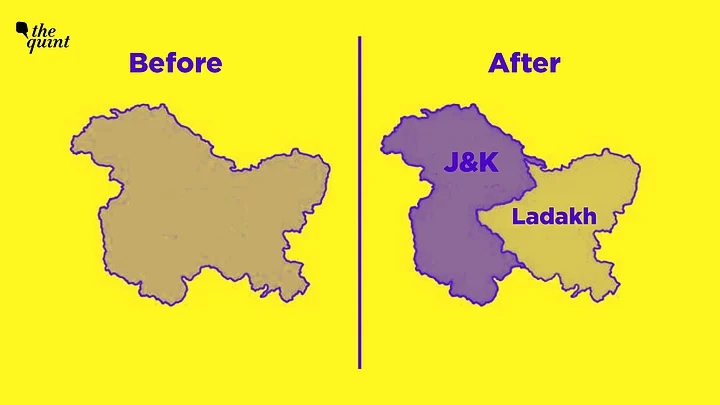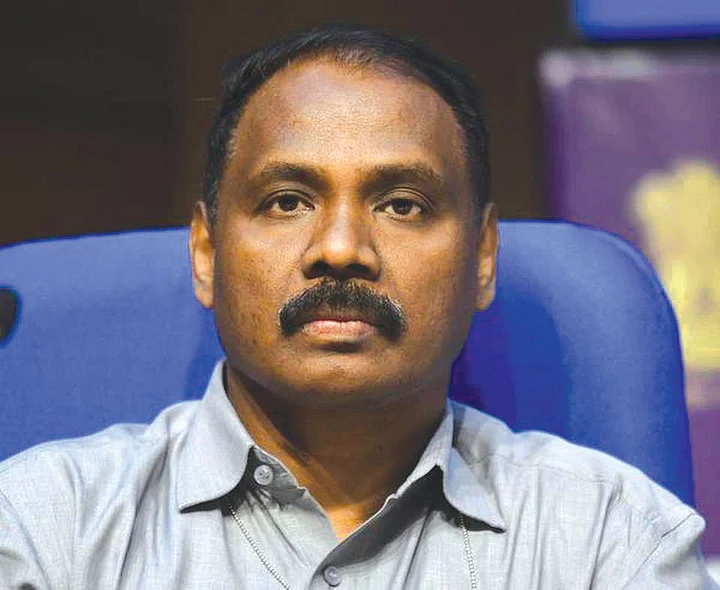Cameraperson: Mukund Bhandari
Video Editor: Ashutosh Bhardwaj, Abhishek Sharma
31 October is here, and with it, the next big step in the Modi government’s Mission Kashmir.
Back in August, the abrogation of Article 370 was closely followed by the news that the State of Jammu & Kashmir would be bifurcated into two new Union Territories.
The Jammu & Kashmir Reorganisation Bill was introduced in the Rajya Sabha on 5 August and passed by both Houses of Parliament on 6 August itself. However, it did not take effect immediately, with 31 October set as the date when it would come into force as an Act.
So how exactly will the erstwhile State of Jammu & Kashmir be reorganised?
What kind of legal and administrative changes will it bring on the ground?
And is it permanent, or could this whole thing be reversed by the Supreme Court of India?
Blueprint for New Union Territories
Perhaps the key feature of the Reorganisation Act is that it doesn’t just split J&K into two states, like what happened with Andhra Pradesh and Telangana, or when Chhattishgarh, Jharkhand and Uttarakhand were created.
One state is now being converted into two Union Territories, the first time something like this has happened:
- Ladakh, comprised of the districts of Kargil and Leh.
- And the remaining districts together as Jammu & Kashmir.

Why two Union Territories? Why not two states, or one state and one Union Territory?
Practically speaking, it’s about control.
Previously, J&K was a state with a special status. A degree of autonomy, with Constitutional provisions and most Central laws only applied when the state’s own legislative assembly approved of these.
But Union Territories are more firmly controlled by the Central government, from their legislative agenda to, crucially, their administration – which will mean no more state bureaucracy.
UNION TERRITORY OF LADAKH
- Ladakh will follow the template from Chandigarh, Daman & Diu, etc, where it won’t have its own legislative assembly – which means it will not get to draft any of its own laws.
- Its administration is technically under the President, carried out on the ground by the Lieutenant Governor, who will be based in Leh.
- The first LG of Ladakh is former defence secretary RK Mathur.
- Ladakh will have no representatives in the Rajya Sabha now, because it doesn’t have a legislative assembly, though it will have one Lok Sabha MP.

UNION TERRITORY OF JAMMU & KASHMIR
- The UT of Jammu & Kashmir will have four MPs in the Rajya Sabha and 5 MPs in the Lok Sabha.
- It will have a legislative assembly in accordance with Article 239A of the Constitution. Which means it will be along the lines of Puducherry, rather than Delhi.
- The Assembly will have a total of 107 seats, four less than the number of seats in the old State Assembly. 24 of these will remain vacant, as they relate to territories in Pakistan Occupied Kashmir.
- Of the 83 seats that are on offer, there will be, for the first time, reservations for Scheduled Castes and Scheduled Tribes, part of a broader scheme of extending national reservations to the region.
- Terms will be five years rather than the six-year terms in the old system.
- The first LG of Jammu & Kashmir is Girish Chander Murmu, expenditure secretary and former principal secretary to the PM when he was chief minister of Gujarat.
- The Assembly will have the ability to frame laws on issues in the state and Concurrent List, though this is restricted – no power over public order, police and much of trade and commerce.
- To avoid conflicts like what we’ve seen between Delhi and the Centre, the Act carves out significant discretion for the LG on All India Services and the Anti-Corruption Bureau, and gives them power to withhold assent from Bills and reserve them for consideration by the President.

J&K TO REMAIN UNDER PRESIDENT’S CONTROL INDEFINITELY
- Although the proclamation of President’s Rule that had been in operation since December 2018 was withdrawn on 31 October, and the new Lieutenant Governor was sworn in on, administration of the new Union Territory continues to remain with the President.
- On Thursday, President Ram Nath Kovind issued an order under Section 73 of the Reorganisation Act to say that “a situation has arisen in which administration of the Union Territory of Jammu and Kashmir cannot be carried on in accordance with the provisions of the Jammu and Kashmir Reorganisation Act, 2019”.
- As a result, the President is assuming the responsibilities of the government of the UT of J&K, and the powers of the LG.
- This has been done for an unspecified period of time.
Legal and Administrative Changes
The abrogation of Article 370 already means that all Central laws will apply to the new Union Territories going forward.
The fifth schedule to the Act also lists 106 Central Acts which will now be applicable in the new Union Territories, while 153 State Acts will be repealed. Several State Acts, however, will continue, including the draconian Public Safety Act which has been used for preventive detentions.
How will this impact things on the ground?
The most significant change is likely to be the application of the Indian Penal Code and the central Code of Criminal Procedure.
J&K had its own Ranbir Penal Code and CrPC, which were mostly the same as their central equivalents. But because these were technically separate laws, it meant legislative and judicial changes to the law didn’t automatically apply there.
For instance, the Supreme Court judgments decriminalising consensual homosexual acts under Section 377 of the IPC and its striking down of the child marital rape exception in Section 375 of the IPC, did not apply to the state.
Some have tried to argue that there was a 1995 J&K High Court decision which offered a way to say this had already happened, but this argument was not conclusive, according to legal experts like senior advocate Anand Grover. The fact that these judgments will now be applicable is therefore a big change.
Other major changes will be to personal laws and transfer of property.
For example the 2005 Hindu Succession Act amendments that gave women equal inheritance rights as men will now apply. The restrictions on transfer of property under Section 139 of the J&K Transfer of Property Act are also gone now.
Juveniles between the ages of 16 and 18 can also be prosecuted as adults now – the 2015 Central law hadn’t been enacted in the state till now.
The central RTI regime will now apply, instead of the state’s own 2009 RTI law – similar institutional changes will happen for a number of laws. However, implementation of these transitions could be a cause for concern.
For instance, in a statement on 29 October, the UN High Commissioner for Human Rights noted that the State’s Human Rights Commission, Information Commission and Commission for Protection of Women and Child Rights are being wound up though the replacement bodies have not yet been established. This creates a vacuum which could encourage human rights abuses.
Cases in Supreme Court
The 31 October watershed doesn’t necessarily mean this reorganisation is set in stone.
Along with the challenges against abrogation of Article 370, the downgrading of the state has been challenged in the Supreme Court, including by National Conference MPs and other public figures like Shah Faesal and Shehla Rashid.
The basic argument is that this is a violation of the principle of federalism. And a violation of Article 3 of the Constitution, which gives Parliament the power to create new states and Union Territories from an existing State – after consultation with the legislature of a state.
In this case, with J&K under President’s Rule, the views of the legislature were not taken. One of the petitions has also challenged the obscure provision inserted in the proclamation of President’s Rule back in December 2018, which allowed this to happen.
The apex court was asked to stay application of the Reorganisation Act till its constitutionality was ascertained by the court, but declined to do so.
The first substantive hearings in the constitutional challenges are set to take place on 14 November.
The Constitution Bench headed by Justice Ramana said that it could reverse any decisions made further to the Act even after it came into force.
While this does leave the door open to a reversal of the reorganisation by the court, practically this would create several difficulties to unpick. Moreover, some legal commentators believe that the refusal to grant a stay means the reorganisation will in fact be upheld, and that this is now a fait accompli.
Either which way, what we do know for certain, is that as of 31 October 2019, India has two new Union Territories – and one less state.
(At The Quint, we are answerable only to our audience. Play an active role in shaping our journalism by becoming a member. Because the truth is worth it.)